Understand mortgage basics
Anúncios
Buying your first home can feel like a roller coaster, right? You’re excited to stop renting, but you might also be wondering how to pick the best mortgage lenders for your situation. A mortgage lets you borrow money to purchase a home, which you repay over time along with interest. By understanding some core concepts, you’ll be in a better place to compare lenders and choose a loan that fits your budget and your long-term goals.
Key mortgage types to know
Mortgages aren’t a one-size-fits-all deal. Different loan types cater to different borrower profiles, so it helps to get familiar with the main options out there.
- Conventional loan
- Typically offered by banks, credit unions, and online lenders.
- Down payment requirement can be as low as 3 percent.
- Might require private mortgage insurance (PMI) if you put less than 20 percent down.
- FHA loan
- Insured by the Federal Housing Administration.
- Suited for first-time buyers due to looser credit requirements and smaller down payments (as low as 3.5 percent).
- Requires an upfront and annual mortgage insurance premium.
- VA loan
- Backed by the Department of Veterans Affairs.
- Available to eligible veterans, servicemembers, and surviving spouses.
- Often requires zero down payment and no PMI, but a funding fee of up to 3.3 percent may apply.
- USDA loan
- Guaranteed by the U.S. Department of Agriculture for rural property purchases.
- Requires zero down payment in many cases.
- Property location and income limits apply.
- Jumbo loan
- For home purchases that exceed conforming loan limits set by federal guidelines.
- Often needs a larger down payment and higher credit score.
- Carries higher interest rates because of increased lender risk.
To dig deeper into each of these, you can read about different types of home loans that might make sense for your budget and credit score.
What affects your mortgage rate?
Mortgage interest rates often change daily. If you lock in your rate on a good day, you’ll pay less in interest over the life of the loan. But rates are just one factor. Here are a few others:
- Your credit score: Higher scores usually secure lower rates.
- Down payment amount: Putting more down can shrink your interest rate, as lenders see you as less risky.
- Loan length: Shorter loan terms (like 15 years) often mean lower rates, but higher monthly payments.
- Loan type: Government-backed loans can have different rate structures than conventional loans.
Keeping all of these in mind can help you compare the best mortgage lenders and pick one that offers favorable rates plus solid customer service.
Budget with a handy calculator
Not sure how much you should spend? Try our home affordability calculator to estimate what you can comfortably afford. It factors in your monthly income, existing debts, and other financial details to show how mortgage payments might fit into your overall budget.
Compare top mortgage lenders
You’ll find thousands of lenders nationwide, but let’s be honest: not all will suit your needs. Some might specialize in quick approvals, others in first-time buyer programs, and still others in low rates or minimal fees. Brushing up on these lenders’ pros and cons can help you zero in on your top contenders.
Below is a quick-reference table of some well-known lenders. Each caters to different goals, from speedy closings to special programs for veterans or first-time buyers. Interest rates and offers may change, so always ask each lender for personalized estimates.
| Lender | Ideal For | Notable Features |
|---|---|---|
| Rocket Mortgage | All-around digital convenience | Ranked high in customer satisfaction (ACSI score of 80), user-friendly online process. |
| Better Mortgage | Quick closings and streamlined process | “One-Day Mortgage” commitment letter, no lender commissions, faster closing times. |
| Guild Mortgage | First-time homebuyers | Access to over 500 down payment assistance programs, 1% down payment advantage option. |
| Navy Federal Credit Union | Military families who want in-person help | 100% financing with certain loans, broad branch network, rate match guarantee. |
| LendingTree | Shopping around for the best rates | Compares quotes from multiple lenders with a soft credit check, so you see several options. |
| Veterans United | Eligible military members/spouses | May offer loans with 0% interest for some qualified borrowers, specialized VA expertise. |
You might also hear about top originators nationwide like United Wholesale Mortgage, Rocket Mortgage, and CrossCountry Mortgage. Data from the Home Mortgage Disclosure Act indicates these big players financed a large share of U.S. home loans in 2024. However, bigger isn’t always better. What really matters is how well a lender’s programs align with your needs.
Choose your ideal loan option
Once you narrow down which of the best mortgage lenders you prefer, the next step is choosing the right loan product. Your main branches here are fixed-rate and adjustable-rate mortgages (ARMs). Both have perks, so let’s talk about how they differ.
Fixed-rate mortgages
A fixed-rate mortgage gives you a predictable monthly payment for the entire term, usually 15 or 30 years. It’s a simple path, and you’ll always know how much you owe. If you’re planning to stay in your home long-term, a fixed rate can offer peace of mind. With rates hovering around 6.36% for a 30-year fixed (as of October 03, 2025, per Bankrate data), you can lock that in if you expect rates might rise.
-
Pros
-
Stable monthly payments.
-
Easier to budget over time.
-
Ideal if you plan to stay put.
-
Cons
-
Potentially higher initial interest rate than ARMs.
-
Less flexibility if rates drop sharply (you’d need to refinance).
Adjustable-rate mortgages
An adjustable-rate mortgage starts off with a fixed introductory rate for, say, 3, 5, 7, or 10 years. After that period, the rate can change periodically—either up or down, depending on market conditions. This can be appealing if you might sell or refinance before the rate adjusts.
-
Pros
-
Lower initial interest rate, at least during the fixed period.
-
Can help you qualify for a more expensive home upfront.
-
Cons
-
Payment uncertainty if rates rise after the intro period.
-
Requires a careful plan for refinancing or dealing with higher payments.
If you’d like a deeper dive, you can also explore the types of home loans to see which product best fits your situation. Feeling uncertain? Churchill Mortgage suggests chatting with local experts or the lender’s rep to weigh the risks and benefits.
Navigate the application steps
After you figure out which mortgage you want, it’s time for the application. Here’s the typical flow you can expect.
1. Get pre-approved for a loan
A pre-approval shows sellers you’re serious, and it gives you a clear idea of your budget range. Lenders will check your credit, verify financial documents, and estimate how much you can borrow. This step is crucial because it helps you shop confidently. Learn more about the process of pre-approval for a home loan to get a head start.
2. Gather financial documentation
You’ll likely need:
- Identification (driver’s license, passport).
- Recent pay stubs.
- W-2 forms from the past two years.
- Bank statements and investment account statements.
- Tax returns from the last couple of years.
Keep these organized in digital form, because many lenders prefer online submission.
3. Submit your application
Thanks to digital platforms, applying for a mortgage can be done from your couch. Better Mortgage, for example, has an online-first approach. After you submit required docs, a loan officer reviews them. If anything’s missing, they’ll let you know. Providing complete, accurate info speeds up approvals.
4. Await underwriting
Underwriting is where the lender’s team evaluates your creditworthiness. They confirm all the details and appraise the property to ensure it matches the loan amount. This step might take days or even weeks, depending on how complex your file is. With some digital-forward lenders, your wait could be shorter.
5. Lock your rate
If your application gets the thumbs up, your lender will offer you a rate lock, typically lasting 30 to 60 days. Accepting locks in your interest rate, so it won’t change during the lock period—even if rates rise. It’s a safeguard, particularly if you’re still finishing your home inspections or final negotiations.
6. Close the deal
Closing involves signing all the final paperwork, reviewing your loan terms one last time, and paying closing costs. Navy Federal Credit Union might allow seller contributions toward closing costs in certain loan scenarios, reducing your out-of-pocket expenses. After closing, the house is yours—congrats!
Plan for down payment and closing costs
Down payments and closing costs can be the biggest hurdles for first-time buyers. But there are ways to manage or reduce these expenses.
Look into down payment assistance
If you’re short on funds, various state and local down payment assistance programs might help you cover the initial outlay. These can come in the form of grants, forgivable loans, or low-interest second mortgages. Also, Guild Mortgage connects borrowers to over 500 assistance programs, and their 1% Down Payment Advantage Program covers an extra 2% for you, up to $5,000. That can make a real difference in jump-starting your homeownership journey.
Factor in closing costs
Closing costs typically range from 2 to 5 percent of the purchase price, covering things like origination fees, appraisals, title insurance, and taxes. If you’re tightening your belt, see if the seller can pay part of these costs, or if your lender has options for rolling them into the loan. Just remember that rolling them in means you pay interest on them, possibly for the entire loan term.
Save on fees and interest
Mortgages can come with extra fees that add up, so being aware can help you shop smarter. Here are some strategies to keep your costs in check.
Compare APR, not just interest rate
APR (annual percentage rate) includes the interest rate plus certain fees, giving you a fuller picture of the loan’s total cost. When you see a surprisingly low interest rate, check the APR to see if fees are included. This clarifies if you’re actually getting a better deal or just a promotional rate.
Avoid (or reduce) private mortgage insurance
PMI adds to your monthly bill if you put down less than 20 percent on conventional loans. The cost can be hundreds of dollars a month, depending on your loan size and credit score. By reaching 20 percent equity—either through paying down the loan or home value appreciation—you might be able to remove PMI. In addition, consider piggyback loans if you prefer to split payments, although piggybacks may come with extra closing costs.
Keep an eye on special promotions
Many lenders run seasonal or promotional rate discounts, like Bank of America’s discount for existing customers with eligible assets. For instance, you might land a slightly lower rate or a small break on closing costs if you keep substantial savings or investment balances at the same institution. Check your bank’s policies or ask your lender if you might qualify.
Explore helpful programs
Beyond comparing the best mortgage lenders, you’ll want to explore homebuyer programs that can further ease the path. If you fit certain niches—like being a veteran or serving as a first responder—you can unlock substantial savings.
Government-backed initiatives
- FHA loans: Good for those with moderate credit or limited funds.
- VA loans: A top choice for veterans or active-duty service members wanting 0 percent down.
- USDA loans: Designed for rural properties, often with zero down.
Special lending programs
- Good Neighbor Next Door: A HUD program that offers discounts on homes for law enforcement officers, teachers, firefighters, and EMTs. Must live in the home for at least 36 months.
- Employer-Assisted Housing: Some employers help cover down payment or closing costs. Program details vary, often requiring you to be a first-time buyer or stay with that employer for a set time.
- Mortgage Credit Certificate (MCC): Provides up to $2,000 annually in tax breaks for eligible first-time buyers.
If you qualify for any of these, it could shave thousands off your total mortgage costs.
Understand customer satisfaction scores
A great rate won’t matter if your lender is a communication nightmare. Looking at satisfaction rankings can help you anticipate how easy or stressful your loan process might be.
- American Customer Satisfaction Index (ACSI) gave Rocket Mortgage a score of 80 in 2024, the highest among lenders surveyed. That suggests fewer customer complaints and a smoother digital experience.
- Chase followed at 78, with Bank of America, U.S. Bank, and Wells Fargo tied at 77.
- Pennymac scored the lowest at 70.
- Overall, mortgage lending ranks in the lower end of satisfaction across industries (average ACSI score: 75).
This doesn’t mean a lender with a lower score won’t work well for you, but you might want to add extra questions if you’re contacting them. Don’t be shy about asking how quickly they respond to emails, how they handle issues, or if they assign you a dedicated mortgage officer.
Consider working with a broker or marketplace
If you’d rather not spend days calling lenders one by one, you might use a marketplace resource like LendingTree. They partner with over 300 lenders nationwide and let you compare up to five loan quotes in one go—without damaging your credit through repeated hard inquiries. A broker can also guide you, but check if they charge extra fees. In many scenarios, brokers are paid by the lender, but you’ll want to confirm how they are compensated before you proceed.
Avoid pitfalls and common mistakes
No one wants unpleasant surprises on the road to homeownership. Here are a few traps to avoid:
- Not shopping around
- A single lender might quote you a 6.50% rate, while another offers 6.30%. That difference adds up. Comparing quotes can literally save you thousands.
- Overlooking fees
- Some lenders might dangle a tempting low rate but load you up with high origination or application fees. Remember to check the APR for a clearer total-cost snapshot.
- Busting your budget
- Just because you qualify for a bigger loan doesn’t mean you should take it. Think about your lifestyle—could you still travel or save for retirement if you max out your mortgage?
- Skipping pre-approval
- House-hunting without being pre-approved can waste time. Sellers might not even consider your offer unless you’ve got that pre-approval letter in hand.
- Neglecting first-time buyer help
- Assistance programs, tax credits, or grants could reduce your burden. Investigate local and national resources, especially if you qualify for government-backed programs.
Dig deeper into specialized loans
There are a few niche options that can greatly benefit people in specific circumstances.
Native American Direct Loan (NADL)
If you’re an American Indian or Alaska Native veteran, or married to a spouse who is, the NADL program could help you purchase, construct, or improve a home on Federal Trust land. It’s guaranteed by the Department of Veterans Affairs, meaning you may get favorable terms and avoid PMI.
Section 184 Indian Home Loan Guarantee
A dedicated program for American Indian and Alaska Native families, tribes, and Alaska villages. It’s designed to encourage homeownership among Indigenous communities. Lower down payments and flexible underwriting guidelines can make qualifying easier.
Piggyback loans
If you have a decent credit score but lack a 20 percent down payment, you might do an 80-10-10 or 80-15-5 piggyback strategy. In this setup, you get one main mortgage (80% of the home price) plus a second smaller mortgage (10% or 15%) to avoid PMI. The remainder is your down payment. But watch out for potentially higher rates on that second loan, plus double closing costs.
Look beyond just the rate
Yes, interest rates matter. But you also want a lender who’s supportive, responsive, and thorough the entire way. Here are a few more key traits to look for when finalizing your decision:
- Customer service style
- Do you prefer phone calls, email, or texting? If you love face-to-face interactions, a lender with local offices like Navy Federal might suit you better than an online-only bank.
- Time to close
- If you’re on a tight timeline, see how quickly the lender typically finalizes a loan. Better Mortgage claims they can close in 17 days, far below the 45-day industry average.
- Transparency in fees
- Reputable lenders should provide a clear breakdown. Hidden fees tend to pop up when communication is lacking.
- Online tools and tracking
- Lenders like Wells Fargo have calculators to track home value estimates or potential renovations. Others let you manage the entire mortgage process from an app. Decide how tech-savvy you want your lender to be.
Prepare for closing day
Closing on your mortgage is a big moment. Typically, you’ll:
- Review the Closing Disclosure, which outlines final loan details.
- Pay any remaining down payment or closing costs.
- Sign all the final paperwork (have your ID with you).
- Get the keys to your new home.
Some lenders allow e-closings, letting you sign documents online. Others require in-person meetings. If you go the digital route, just make sure you fully understand each document before e-signing.
Get set for success in 2023 and beyond
You’re probably picturing the day you step into your new home, with a sense of relief that the mortgage process is behind you. When comparing the best mortgage lenders, focus on more than just the lowest rate. Evaluate reputation, closing times, special programs for first-time or military buyers, and whether or not you click with the loan officer handling your file.
When you’re ready to take the next step, getting pre-approval for a home loan will give you the clarity and credibility you need to negotiate effectively. Also, keep researching down payment assistance programs if cash on hand is tight. Finally, check out the home affordability calculator one more time to confirm you’re not stretching your finances too thin.
With a bit of homework and a clear strategy, you’ll soon be sipping coffee in your very own place, free from the landlord’s rules. Here’s to finding a great mortgage that truly makes you smile—both now and for many years ahead. Enjoy the adventure.








